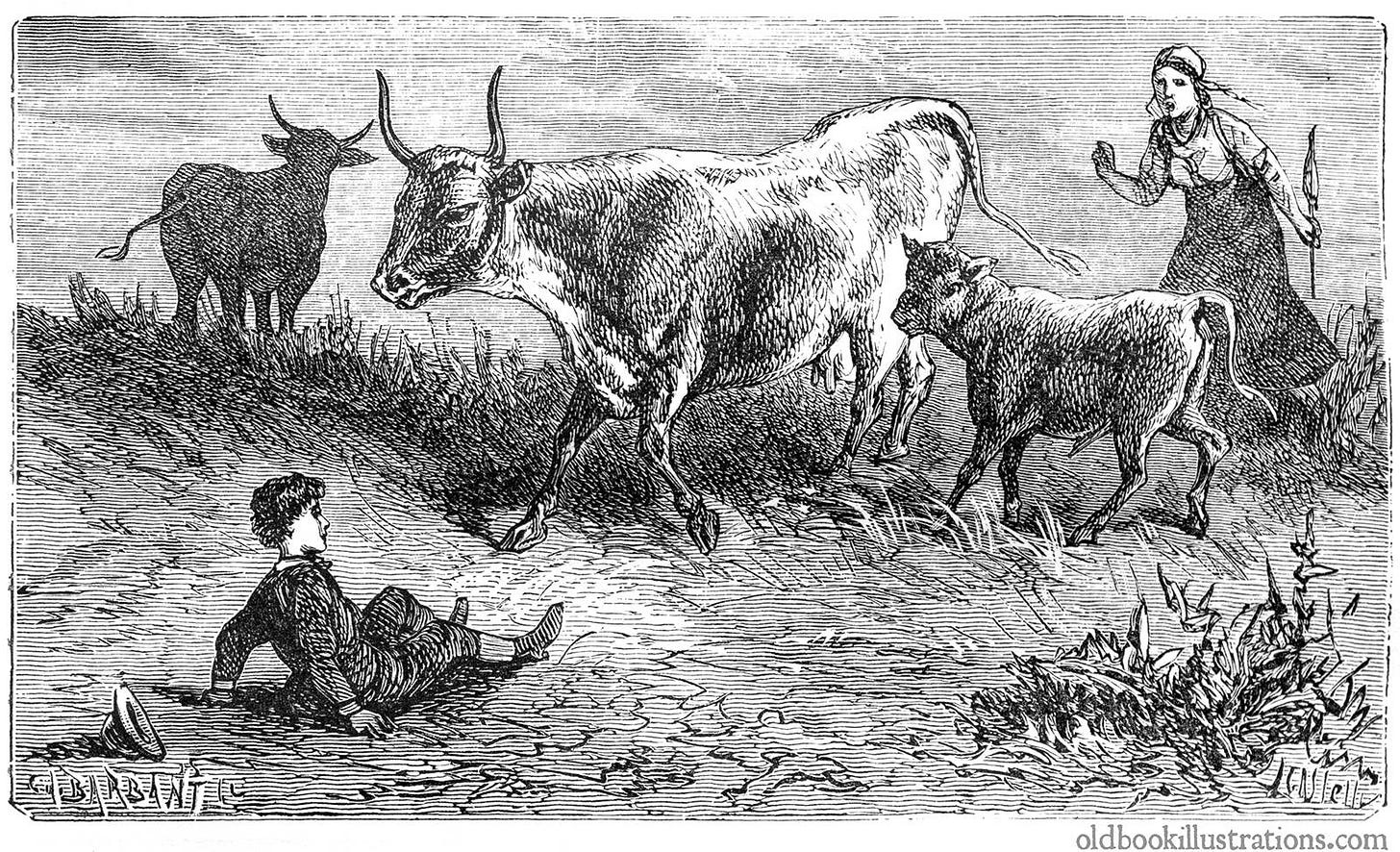Beef: It's maybe what's for dinner
Buying beef can be intimidating, and the choices you make are fraught with politics.
It’s hard to even know where to begin. There are so many things about the meat industry that are unfathomably despicable, and gross. Not gross enough for me to consider becoming vegetarian, but gross enough that right now it is more important than ever before to get serious about educating yourself on meat production and changing your purchasing habits in order to affect change. And before you write me off as being preachy, consider this: the food industry is one of the only places where your dollar still carries weight. Actual. Freakin. Weight. The stakes (heh heh) are so high because if we don’t change the way meat is produced we’re all going to die from cows farting.
Let’s break this down into the different animals that meat is coming from and talk about each one. If talking about the animal specifically makes you uncomfortable, you’re only strengthening my argument about how far removed we are from actual food sources. So get over it.
For this post, we’re going to focus on cows. If you pay any attention at all to the slabs of beef in the grocery store, you’ve probably noticed the option to buy grass-fed beef or, um, not grass-fed beef. There’s a debate about which one is healthier to consume, but that’s the wrong debate. What you should be concerned about, first and foremost, is the environmental impact of beef; secondly, you should be concerned about flavor.

First, the environmental impact. In case you weren’t aware, cows eat grass. Even though they don’t eat grain they can live off it if necessary, and the grain we’re feeding them isn’t found in a ready-to-eat state on the ground. That means we have to produce it and process it before we give it to the cows. That is an expensive thing to do at scale, monetarily and environmentally. Producing the grain can lead to ruining vast acreages with monocultures (there’s your pretentious word-o-the-day), pesticides, fossil fuel consumption, water pollution, and all the other bad things you can imagine doing to land. After we produce the grain, we have to get it to the cows, and some of the cows eating this grain are living on something called a feedlot. If you’d like to be really sad and probably throw up a little, you can find images and videos of cattle feedlots on the Internet. If you were on the fence about eating red meat, and were hoping someone could convince you to stop, you can watch a few of those videos and you’ll be knocked right off that fence entirely.
Second, consider the flavor. Grass-fed cows can taste as good as grain fed cows, but it’s all about the fat. Not the fat you see, the overhyped marbling that everyone is looking at when they’re picking a steak to buy at the store. The USDA has trained you to look at visible fat, but it’s about the invisible fat which is a direct product of the diet and lifestyle of the cow. The takeaway is that if you want to up your beef game you should get closer to the source of the beef, or buy a microscope. Just kidding, buying a microscope will not help you at all.
Do some research about what cattle farms deliver to your local farmers market, or see if any of them participate in Community Supported Agriculture programs (CSAs). You might be able to find cows that are free-range, grass-fed, and treated like royalty right before the death part (these will be very delicious). A friend of mine told me about a farm that he used to live near that would use the leftover wort from a local brewery to finish their cows, meaning those cows got fat and drunk before they died. I thought that was beautiful and I bet those were the best steaks ever.
The last note on cows: try to treat red meat as a fancy thing you only buy every once in awhile, and treat yo’self when you buy it.
DO:
- Buy beef if the company producing it is nice to cows
- Consider how much beef you need vs how much you want
- Research CSAs or farmers market beef options near you
- Try to draw a cow from memory, it is hilarious
DON’T:
- Argue with people about marbling
- Buy beef from companies that are not nice to cows
- Watch videos about how cows are treated at the bad companies unless you are really ready to stop buying it
- Ignore me
I attempted to be brief, and to simplify this particular topic (as advertised), but things are rarely simple. When I first researched this, the easiest links to find were exclusively focused on emissions and climate change. Since I wrote the words above the line, I’ve read more about the narratives we encounter when it comes to beef and I feel fairly conflicted on this topic. It’s a given that folks that love steak or have a vested interest in beef production will favor the argument that ethical beef is achievable and preferable to plant-based substitutes (that are usually extremely processed, made of soy, and taste like shit); but it’s also a given that folks that have given up glorious steaks are more likely to subscribe to anyone claiming beef is evil.
I still feel confident that learning where your food comes from is important, and these days it’s an easy first step if you live in an area where you have access to a farmers market. If you don’t, you may still be able to find a farm with a website where you can have quality, ethical foods shipped directly to your doorstep. I think it’s still worth exploring how you can change your shopping habits to vote with your dollar for more choices, and better practices.
Serendipitously, a couple people I like recently shared links on this topic.
I’m going to order a book titled Sacred Cow: The Case for (Better) Meat: Why Well-Raised Meat Is Good for You and Good for the Planet, which obviously is the bull case (boom nailed it) for the pro-steak crowd…and annoyingly co-authored by an OG Paleo bro. If you’re interested in getting the book yourself, reply back and let me know and we can read it together.
Related: commentary on Epicurious’ decision to exclude beef from its recipes by a co-author of the Sacred Cow book (h/t JD for the link).
If you’ve already decided beef isn’t for you, here’s a neat post about how a super fancy restaurant in NYC is going vegan (h/t Kyle for the link).
I won’t be hanging out in here in meat world for long, so if you were getting nervous that I was going to be grossing you out for the next few months don’t worry. I apparently wrote plenty on cows but didn’t get much further, so I’ve decided to sprinkle meat posts randomly throughout as I get around to researching and writing about each category. For future reference, here are the categories I’ve got in my notes: pigs, chickens, sheeps, fishes, bugs of the sea / rock gum, and pets.
Next time I’m going to write about meal planning, which is one of the few areas of my life I feel like I’m totally crushing. We’ll talk a little more about where groceries come from, and get specific on making grocery lists. If that’s not a tiny bit exciting to you, then prepare to be super disappointed.
